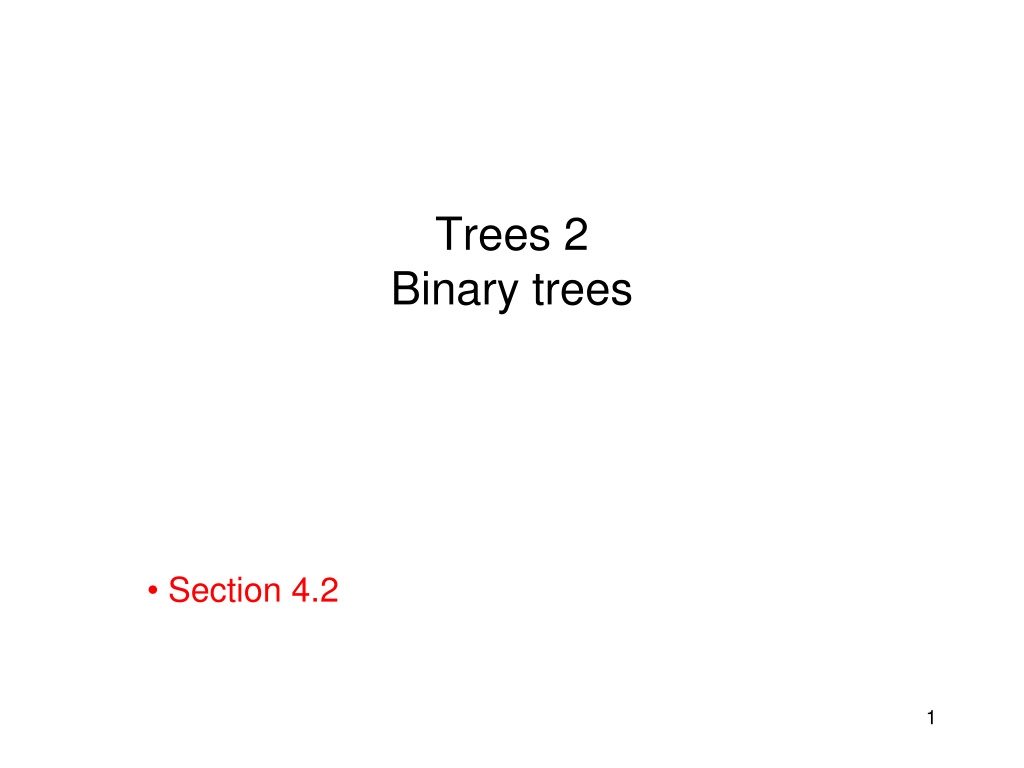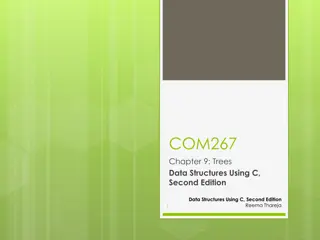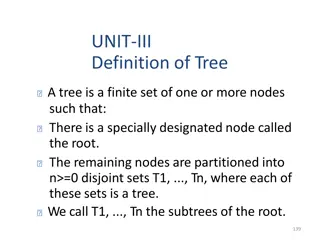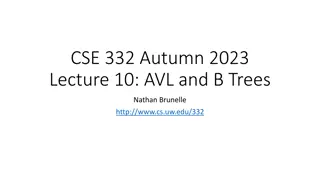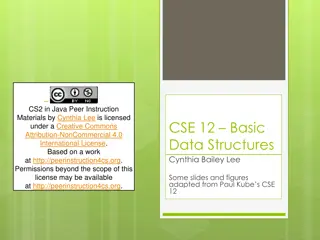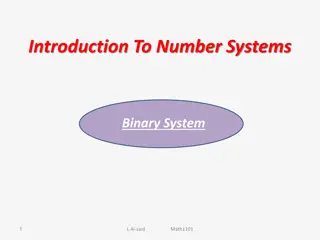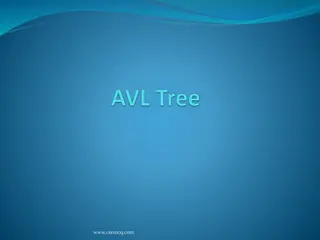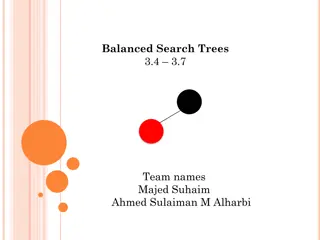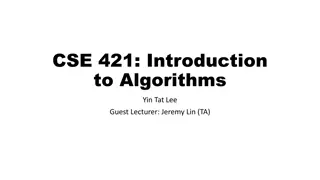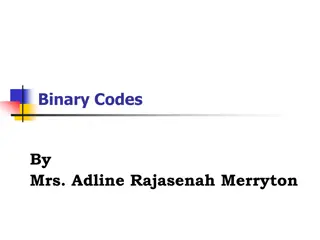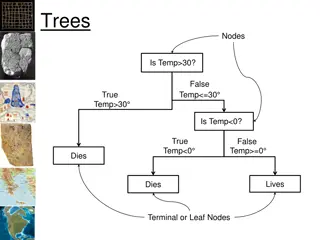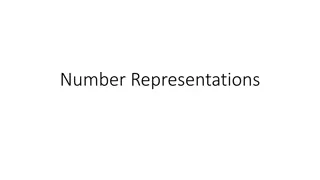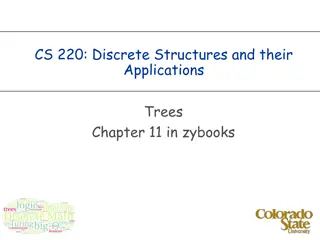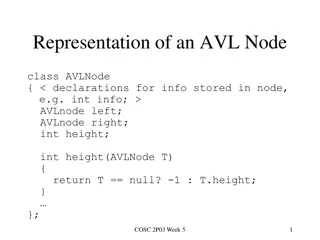Binary Trees: A Comprehensive Guide
Delve into the fascinating world of binary trees in this comprehensive section. Learn about their structure, traversal methods, and key properties. Explore common algorithms and applications of binary trees, and enhance your understanding of these fundamental data structures. Dive into the intricacies of balancing trees, tree rotations, and more advanced topics. Whether you're a beginner or an experienced coder, this section offers valuable insights and practical knowledge to elevate your programming skills.
Download Presentation

Please find below an Image/Link to download the presentation.
The content on the website is provided AS IS for your information and personal use only. It may not be sold, licensed, or shared on other websites without obtaining consent from the author.If you encounter any issues during the download, it is possible that the publisher has removed the file from their server.
You are allowed to download the files provided on this website for personal or commercial use, subject to the condition that they are used lawfully. All files are the property of their respective owners.
The content on the website is provided AS IS for your information and personal use only. It may not be sold, licensed, or shared on other websites without obtaining consent from the author.
E N D
Presentation Transcript
Trees 2 Binary trees Section 4.2 1
Binary Trees Definition: A binary tree is a rooted tree in which no vertex has more than two children Left and right child nodes 1 root 2 3 4 5 6 7 2
Complete Binary Trees Definition: A binary tree is complete iff every layer except possibly the bottom, is fully populated with vertices. In addition, all nodes at the bottom level must occupy the leftmost spots consecutively. 1 root 1 root 2 3 2 3 4 5 6 4 5 6 7 3
Complete Binary Trees A complete binary tree with n vertices and height H satisfies: 2H < n < 2H + 1 22 < 7 < 22 + 1 , 22 < 4 < 22 + 1 1 1 root root n = 7 H = 2 n = 4 H = 2 2 3 2 3 4 5 6 7 4 4
Complete Binary Trees A complete binary tree with n vertices and height H satisfies: 2H < n < 2H + 1 H < log n < H + 1 H = floor(log n) 5
Complete Binary Trees Theorem: In a complete binary tree with n vertices and height H 2H < n < 2H + 1 6
Complete Binary Trees Proof: At level k <= H-1, there are 2k vertices At level k = H, there are at least 1 node, and at most 2H vertices Total number of vertices when all levels are fully populated (maximum level k): n = 20 + 21+ 2k n = 1 + 21 + 22 + 2k (Geometric Progression) n = 1(2k + 1 1) / (2-1) n = 2k + 1 - 1 7
Complete Binary Trees n = 2k + 1 1 when all levels are fully populated (maximum level k) Case 1: tree has maximum number of nodes when all levels are fully populated Let k = H n = 2H + 1 1 n < 2H + 1 Case 2: tree has minimum number of nodes when there is only one node in the bottom level Let k = H 1 (considering the levels excluding the bottom) n = 2H 1 n > n + 1 = 2H Combining the above two conditions we have 2H < n < 2H + 1 8
Vector Representation of Complete Binary Tree Tree data Vector elements carry data Tree structure Vector indices carry tree structure Index order = levelorder Tree structure is implicit Uses integer arithmetic for tree navigation 9
Vector Representation of Complete Binary Tree Tree navigation Parent of v[k] = v[(k 1)/2] Left child of v[k] = v[2*k + 1] Right child of v[k] = v[2*k + 2] 0 root l r ll lr rl rr 10
Vector Representation of Complete Binary Tree Tree navigation Parent of v[k] = v[(k 1)/2] Left child of v[k] = v[2*k + 1] Right child of v[k] = v[2*k + 2] 0 1 2 3 4 5 6 0 11
Vector Representation of Complete Binary Tree Tree navigation Parent of v[k] = v[(k 1)/2] Left child of v[k] = v[2*k + 1] Right child of v[k] = v[2*k + 2] 0 1 2 3 4 5 6 0 l 12
Vector Representation of Complete Binary Tree Tree navigation Parent of v[k] = v[(k 1)/2] Left child of v[k] = v[2*k + 1] Right child of v[k] = v[2*k + 2] 0 1 2 3 4 5 6 0 l r 13
Vector Representation of Complete Binary Tree Tree navigation Parent of v[k] = v[(k 1)/2] Left child of v[k] = v[2*k + 1] Right child of v[k] = v[2*k + 2] 0 1 2 3 4 5 6 0 l r ll 14
Vector Representation of Complete Binary Tree Tree navigation Parent of v[k] = v[(k 1)/2] Left child of v[k] = v[2*k + 1] Right child of v[k] = v[2*k + 2] 0 1 2 3 4 5 6 0 l r ll lr 15
Vector Representation of Complete Binary Tree Tree navigation Parent of v[k] = v[(k 1)/2] Left child of v[k] = v[2*k + 1] Right child of v[k] = v[2*k + 2] 0 1 2 3 4 5 6 0 l r ll lr rl 16
Vector Representation of Complete Binary Tree Tree navigation Parent of v[k] = v[(k 1)/2] Left child of v[k] = v[2*k + 1] Right child of v[k] = v[2*k + 2] 0 1 2 3 4 5 6 0 l r ll lr rl rr 17
Binary Tree Traversals Inorder traversal Definition: left child, vertex, right child (recursive) Algorithm: depth-first search (visit between children) 18
Inorder Traversal 1 1 root root 2 3 2 3 4 5 6 7 4 5 6 7 1 1 root root 2 3 2 3 4 5 6 7 4 5 6 7 19
Inorder Traversal 1 1 root root 2 3 2 3 4 5 6 7 4 5 6 7 1 1 root root 2 3 2 3 4 5 6 7 4 5 6 7 20
Inorder Traversal 1 1 root root 2 3 2 3 4 5 6 7 4 5 6 7 1 1 root root 2 3 2 3 4 5 6 7 4 5 6 7 21
Inorder Traversal 1 1 root root 2 3 2 3 4 5 6 7 4 5 6 7 22
Binary Tree Traversals Other traversals apply to binary case: Preorder traversal vertex, left subtree, right subtree Inorder traversal left subtree, vertex, right subtree Postorder traversal left subtree, right subtree, vertex Levelorder traversal vertex, left children, right children 23
Example: Expression Tree How do you construct an expression tree from a postfix expression? E.g a b + c d e + * * 24
Build Expression Tree from Postfix Expression Let S be a stack while not end of the postfix expression Get next token If (token is operand) Create a new node with the operand Push new node into stack S If (token is operator) pop corresponding operands from S create a new node with the operator (and corresponding operands as left/right children) push new node into stack S end while S.top is the final binary expression tree 25
a b + c d e + * * b a 26
a b + c d e + * * + a b 27
a b + c d e + * * + c d e a b 28
a b + c d e + * * c + + a d e b 29
a b + c d e + * * + * a c + b d e 30
a b + c d e + * * * + * a c + b d e 31
Obtaining Infix Expression from Binary Expression Tree Traversing the tree using inorder traversal How to ensure correct precedence Adding proper parentheses 32
Reading assignment Section 4.3 33
